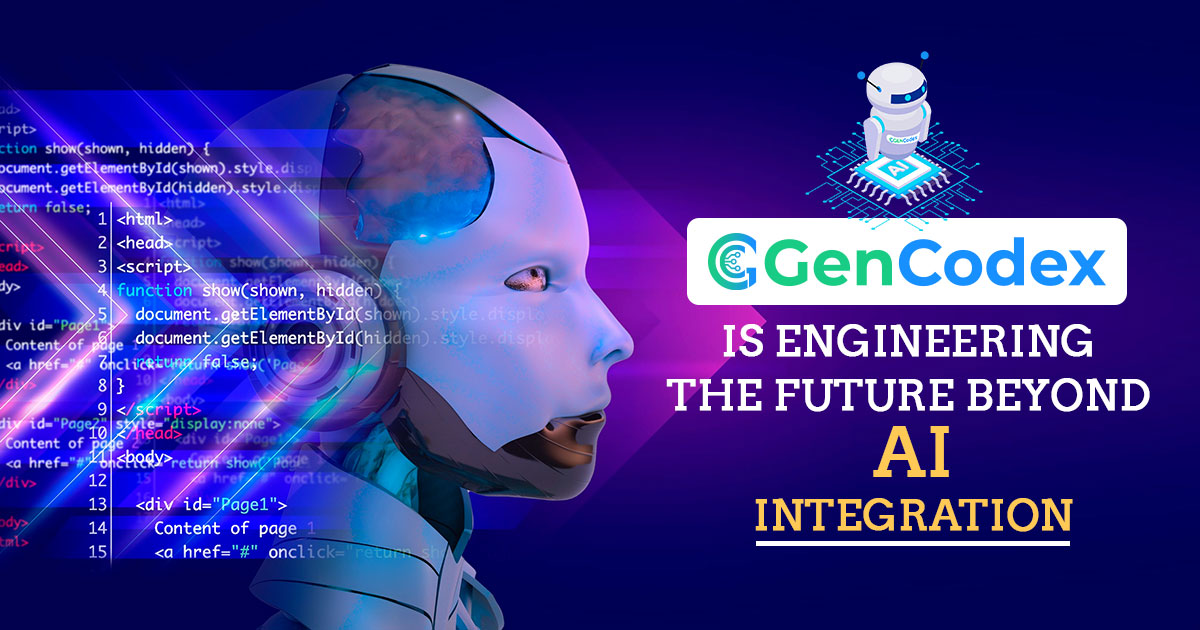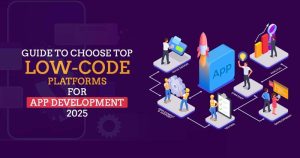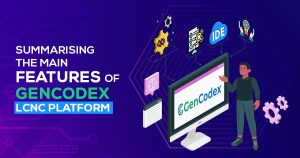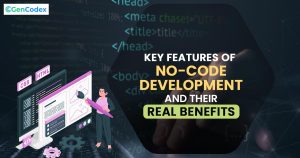Table of Contents
In the fast-changing world of software development, a new buzzword is making waves: “vibe coding.” It’s the hot topic in places like Silicon Valley, where tech influencers enthusiastically support it and companies are quick to jump on board. Have you ever wished that creating software could be simpler? “Vibe Coding” proposes a future where artificial intelligence helps us develop programs intuitively, using our ideas and feelings instead of complex coding skills. This shift could make technology more accessible, transforming how we approach software development and creativity.
Thanks to user-friendly AI tools, creating functional apps has become as easy as typing out a simple request. This is exciting because it suggests that anyone can become a developer, speeds up the creation of new projects, and helps turn complicated ideas into real software quickly. However, those working in tech, including business founders and experienced engineers, are realising that this trend has its limitations and challenges.
While the tech industry is busy trying to create assessments to evaluate “vibe coding” and set up rules to keep things in check, these efforts are just temporary fixes. They help identify the issues but don’t really solve them. The real solution lies not in regulating how AI is used but in improving and evolving it. This is where GenCodex, an innovative AI software, is making a significant impact. GenCodex isn’t just any tool for turning prompts into code; it’s a smart and adaptable partner in development that aims to tackle the confusion caused by vibe coding. It focuses on transforming AI assistance from a possible risk into a valuable strategic advantage.
Creating a Vibe Coding Strategy that Is Double-Edged
To understand the genius of GenCodex, one must first grasp the nuances of the problem it solves. “Vibe coding” refers to using AI and Large Language Models (LLMs) to generate code based on a high-level idea or “vibe.” An engineer doesn’t need to know the specific syntax for a complex algorithm; they just need to describe what they want to achieve. As the provided context notes, this is one of the most prominent use cases to emerge from the AI rage, with tech giants like Google and Microsoft reporting that AI already writes around 30% of their new code—a figure expected to climb.
The positive side of this development is that it makes creating applications much easier. People who aren’t formally trained in computer science can now bring their app ideas to life. However, this convenience comes with a downside. Nida Sahar Sunder, who founded a cloud infrastructure platform called Fedo, highlights a significant concern: “There is an overdependence on AI, which is causing issues with critical thinking.” When AI gives a complete answer, developers might not feel the need to consider important details like possible problems or better solutions. Instead of being builders of strong and effective systems, they become more like curators of what the AI produces.
This brings us to what the context calls the “Hard Vibes” of the new tech landscape:
Weak Understanding of Basics:
Many new programmers depend too much on AI to create code without truly grasping the fundamental concepts. This means they don’t fully understand how the code works, how to troubleshoot it if something goes wrong, or how to improve its performance when needed.
Misleading Sense of Efficiency:
As Abhishek Koushik, a co-founder of the recruiting platform WeCP, points out, while AI allows someone to create an app with just a few simple instructions, it’s important to evaluate whether they really have the skills to build effective solutions. A developer might produce thousands of lines of code quickly, but if that code has mistakes, security flaws, or is hard to maintain, it can actually reduce overall productivity. In fact, it often leads to more work for the rest of the team.

Increasing Technology Debt Generated by Artificial Intelligence
The most significant challenge emerging from vibe coding is the quality of the code itself. A shocking 2024 report from GitClear, which analyzed 211 million lines of AI-generated code, found that the number of duplicate codes skyrocketed to 6.6% in 2024, a massive jump from 1.8% in 2023.
This statistic is an engineering manager’s nightmare. Duplicate code is a cardinal sin in software development because it violates the “Don’t Repeat Yourself” (DRY) principle. It bloats the codebase, makes maintenance a Herculean task (a bug fix must be applied in multiple places), and increases the cognitive load on developers who need to understand the context of each duplicative block. Standard LLMs, in their quest to fulfil a prompt, have no memory of the existing codebase. They will happily generate a new function that is identical to one written last week, creating a tangled, unmanageable mess.
It’s important to understand that “many codes created by AI aren’t ready for real-world use. Code that is ready for production needs to be more than just functional it needs to be secure, efficient, scalable, well-documented, and thoroughly tested. A basic AI model doesn’t take these important factors into account. As a result, it can create code that has serious security issues, runs inefficiently, or is confusing and hard for people to read. This situation increases the workload for experienced engineers, who find themselves spending more time fixing problems rather than focusing on new ideas and innovations. They often have to sift through and correct the mistakes made by less experienced developers and the AI tools they use.
Covering the Industry with Reactive Security
In response, the industry is trying to adapt. Neeti Sharma, CEO of Teamlease Digital, mentions that companies are now assessing a candidate’s “quick library skills” instead of traditional coding skills. Hiring platforms like Cutshort, as co-founder Nikunj Verma explains, are changing their assessments to see how candidates can work with AI to solve problems. WeCP’s “vibe coding assessment tools” are a perfect example, asking senior candidates to build a clone of a platform like X (formerly Twitter) with unique constraints, testing their ability to use AI while still implementing specific business needs.
While these measures are important, they mainly serve as protective steps. They’re designed to reduce the negative effects of using vibe assessments during the hiring process. However, they don’t really address the main issue facing the developers who are already part of the team. The key problem is that the AI tools we have aren’t advanced enough. They excel at following commands but struggle when it comes to working together effectively.
GenCodex was created to bridge this significant gap.
Related: How Generative AI is Changing App & Software Development
Future Impact of AI on Software Development with Vibe Coding
Beneath the excitement surrounding AI technology, there’s an emerging issue that is hard to ignore. The tools meant to make software development easier are actually creating new challenges for teams. Industry experts are noticing a worrying trend: as more people start using AI to help with coding, there’s a growing need for more thorough code reviews and guidance. This is particularly concerning because, while many individuals are good at getting AI to generate code, they may not have a strong understanding of coding principles themselves. Much of the code produced isn’t ready to be used in real projects, which means that essential problem-solving skills are getting weaker over time. At the same time, senior engineers are feeling increasingly overwhelmed by the additional responsibilities.
GenCodex is a groundbreaking new tool for developers that enhances the way we create software. Unlike traditional tools that simply assist with coding, GenCodex acts as a smart partner that works alongside developers, helping them write better code while also promoting good practices.
Here’s how GenCodex tackles some of the biggest challenges in the tech industry:
#1. Addressing the “Production-Ready” Challenge:
Unlike typical AI tools that generate code without context, GenCodex’s unique Context Engine works directly with the entire project. When a developer asks for help, GenCodex doesn’t just consider the immediate request; it looks at the overall structure of the project, including how the database is set up and the coding style already in use.
Here’s how its “Production-Ready” features help
Security Checks:
GenCodex reviews the generated code against common security risks, like potential vulnerabilities that could allow malicious activities (for instance, issues that could let unauthorized access to your data). It flags these issues before the code is finalized.
Performance Improvements:
The tool spots problems that can slow things down, such as inefficient database queries, and suggests ways to speed up these operations. This can transform slow, resource-heavy code into quick and efficient solutions.
Style and Documentation:
GenCodex ensures the code looks neat and follows the company’s specific style guide. It also creates easy-to-understand documentation and comments, which makes it simpler for other developers to work with the code in the future.
#2. Reducing Code Duplication:
To combat the 6.6% duplication rate highlighted by GitClear, GenCodex features a “Code De-duplication and Refactoring Assistant.” As a developer code, the assistant runs in the background. If it detects that a new piece of logic is functionally similar to a current part of the codebase, it proactively alerts the developer. It will suggest refactoring the existing function to be more generic and reusable, thereby upholding the DRY principle and ensuring the codebase remains clean, lean, and maintainable.
#3. Promoting Critical Review with Socratic Conversation
GenCodex is designed to reverse the trend of atrophying critical thinking skills. It employs a “Socratic Coder” method. Instead of just providing a final answer, GenCodex often engages the developer in a dialogue. It might ask:
“This implementation handles the primary use case, but have you considered the edge case where the user input is null?”
“You’ve requested a direct database write. For this data type, a message queue might provide better resilience. Would you like to explore that pattern?”
“This generated code uses a library with a known memory leak in version 2.1. I recommend upgrading to version 2.5 or using an alternative. Which would you prefer?”
By posing these questions, GenCodex forces the developer to think, to consider alternatives, and to learn. It transforms the AI from a crutch into a mentor, actively building the foundational knowledge that first-generation tools erode.
#4. Efforts to reduce the Review Task
GenCodex dramatically reduces the time senior engineers spend on mundane code reviews. It’s an “Automated Pull Request Analyst” that pre-reviews code before it ever comes to a human. It provides a detailed report directly in the pull request, outlining potential bugs, style guide violations, and performance bottlenecks. By the time a senior developer looks at the code, 80% of the common issues have already been flagged and often fixed, allowing them to focus on high-level architectural and logical feedback, rather than correcting missing semicolons or inefficient loops.
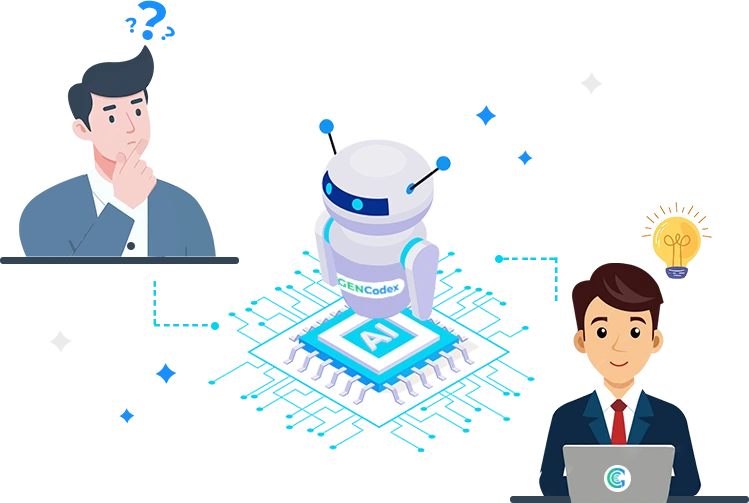
GenCodex AI Base Platform is the Future of Intelligent Collaboration
The rise of “vibe coding” has taught us an important lesson: simply generating code isn’t enough. Without smart thinking, proper context, and a focus on quality, this approach can create just as many challenges as it solves. Right now, companies are using quick assessments to hire developers, but this is only a temporary fix for a larger issue that needs a significant technological improvement.
GenCodex AI-powered low-code platform is a groundbreaking solution to the challenges of vibe coding. By integrating key principles like security, performance, and ease of maintenance directly into its system, GenCodex changes the way we develop software. It helps less experienced developers write high-quality code, allows more experienced developers to concentrate on innovative ideas, and gives managers peace of mind that their codebase isn’t burdened with hidden problems.
The future of software development isn’t about replacing human developers with machines; it’s about enhancing their abilities with smart technology. It’s not just about giving simple prompts but rather creating something harmonious out of what might seem chaotic. In this new age, GenCodex is like a conductor’s baton, ensuring that the code we produce is strong, reliable, and ready to meet future demands.
Reference: economictimes.indiatimes.com
